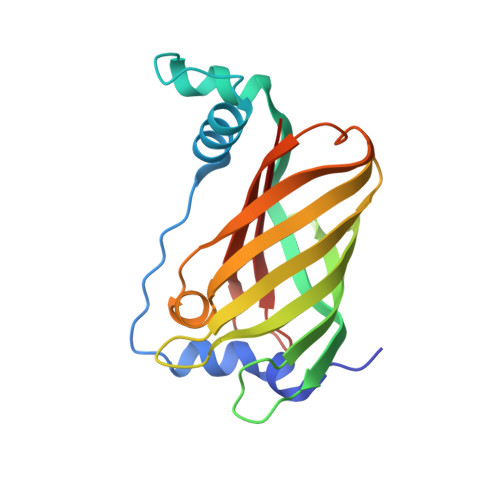Enzyme-Dependent [4 + 2] Cycloaddition Depends on Lid-like Interaction of the N-Terminal Sequence with the Catalytic Core in PyrI4
Zheng, Q., Guo, Y., Yang, L., Zhao, Z., Wu, Z., Zhang, H., Liu, J., Cheng, X., Wu, J., Yang, H., Jiang, H., Pan, L., Liu, W.(2016) Cell Chem Biol 23: 352-360
- PubMed: 26877021
- DOI: https://doi.org/10.1016/j.chembiol.2016.01.005
- Primary Citation of Related Structures:
5BTU, 5BU3 - PubMed Abstract:
The Diels-Alder [4 + 2] cycloaddition reaction is one of the most powerful and elegant organic synthesis methods for forming 6-membered molecules and has been known for nearly a century. However, whether and how enzymes catalyze this type of reaction is still not completely clear. Here we focus on PyrI4, an enzyme found in the biosynthetic pathway of pyrroindomycins where it catalyzes the formation of a spiro-conjugate via an enzyme-dependent exo-selective [4 + 2] cycloaddition reaction. We report the crystal structures of PyrI4 alone and in complex with its product. Comparative analysis of these structures, combined with biochemical analysis, lead us to propose a unique trapping mechanism whereby the lid-like action of the N-terminal tail imposes conformational constraints on the β barrel catalytic core, which enhances the proximity and polarization effects of reactive groups (1,3-diene and alkene) to drive cyclization in a regio- and stereo-specific manner. This work represents an important step toward the wider application of enzyme-catalyzed [4 + 2] cyclization for synthetic purposes.
Organizational Affiliation:
State Key Laboratory of Bioorganic and Natural Products Chemistry, Shanghai Institute of Organic Chemistry, Chinese Academy of Sciences, 345 Lingling Road, Shanghai 200032, China.
















